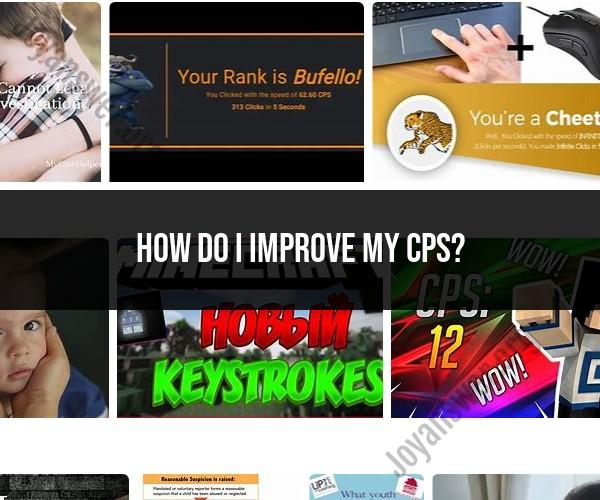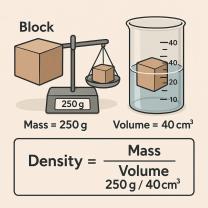How do I improve my CPS?
Improving your CPS (Critical Path Scheduling) skills is essential for effective project management and planning. Here are some tips to help you enhance your CPS skills:
Learn the Basics:
- Start by understanding the fundamentals of Critical Path Scheduling. Learn about tasks, dependencies, duration, and critical path analysis.
Use Scheduling Software:
- Familiarize yourself with scheduling software like Microsoft Project, Primavera P6, or other project management tools. These software programs can help automate the scheduling process and perform critical path analysis.
Practice Regularly:
- Practice creating schedules for different types of projects. The more you practice, the more comfortable you'll become with the process.
Understand Task Dependencies:
- Learn about different types of task dependencies, such as Finish-to-Start (FS), Start-to-Start (SS), Finish-to-Finish (FF), and Start-to-Finish (SF). Understand when to use each type.
Identify Critical Path:
- Focus on identifying the critical path in a project schedule. The critical path is the longest sequence of tasks that determines the project's duration.
Optimize Resources:
- Learn to allocate resources efficiently to avoid resource conflicts and delays. Resource leveling can help balance resource workloads.
Manage Constraints:
- Understand how constraints like constraints can impact your project schedule and how to manage them effectively.
Use Milestones:
- Incorporate milestones in your schedule to track progress and significant achievements.
Risk Assessment:
- Consider potential risks that can affect your project schedule. Develop contingency plans for handling delays and disruptions.
Collaborate and Communicate:
- Work closely with team members, stakeholders, and clients to gather input and ensure everyone is on the same page regarding project timelines and dependencies.
Continuously Monitor and Update:
- Regularly monitor your project schedule to track progress and identify any deviations from the plan. Be prepared to adjust the schedule as needed.
Seek Training and Certification:
- Consider enrolling in project management courses or pursuing certifications such as the Project Management Professional (PMP) certification, which includes project scheduling as a core competency.
Learn from Experience:
- Reflect on past projects and identify what worked well and what could be improved in terms of scheduling. Apply lessons learned to future projects.
Stay Informed:
- Keep up-to-date with industry best practices and advancements in project scheduling techniques. Attend conferences, webinars, or workshops related to project management.
Network with Professionals:
- Connect with other project management professionals and join industry associations or online forums to exchange ideas and experiences.
Soft Skills:
- Develop soft skills such as leadership, communication, and conflict resolution, as they are essential for effective project scheduling and management.
Remember that improving your CPS skills takes time and practice. Be patient with yourself and continue learning and refining your skills as you gain more experience in project management and scheduling.
Boosting Your CPS (Clicks Per Second): Tips for Improvement
Clicks per second (CPS) is a measure of how fast someone can click a button. It is a valuable skill for gamers, programmers, and other professionals who need to be able to click quickly and accurately.
There are a number of things you can do to boost your CPS. Here are a few tips:
- Use a comfortable mouse. A good mouse will make it easier to click quickly and accurately.
- Adjust your mouse sensitivity. A higher mouse sensitivity will allow you to move your cursor more quickly, which can help you to click faster.
- Practice regularly. The more you practice, the faster you will become at clicking.
- Use your whole arm to click. Don't just use your fingers. Using your whole arm will give you more power and speed.
- Take breaks. Don't try to click too fast for too long. Take breaks every 20-30 minutes to avoid fatigue.
Here are some specific exercises and techniques you can use to improve your CPS:
- Single-click exercises. Start by practicing single clicks. Try to click as quickly and accurately as possible.
- Double-click exercises. Once you can click accurately and quickly with one finger, start practicing double clicks. Try to click two buttons in rapid succession.
- Triple-click exercises. Once you can double click accurately and quickly, start practicing triple clicks. Try to click three buttons in rapid succession.
- Jitter clicking. Jitter clicking is a technique that involves clicking the mouse button rapidly and randomly. This technique can be used to achieve very high CPS scores.
Becoming a CPS Pro: Strategies to Increase Your Click Speed
If you want to become a CPS pro, you need to be willing to put in the time and effort to practice. Here are a few strategies that can help you to increase your click speed:
- Focus on accuracy. It is important to be accurate when clicking, even when you are trying to click as fast as possible. If you are not accurate, you will not be able to perform well in games or other applications that require high CPS.
- Practice with different exercises and techniques. There are a number of different exercises and techniques that you can use to improve your CPS. Experiment with different techniques to find what works best for you.
- Use a metronome. A metronome can help you to practice clicking at a consistent pace. This can help you to develop muscle memory and improve your CPS.
- Track your progress. It is helpful to track your progress over time so that you can see how you are improving. You can use a CPS testing website to track your progress.
Clicking Faster: Exercises and Techniques to Enhance Your CPS
Here are some specific exercises and techniques that you can use to enhance your CPS:
- The butterfly click. This exercise involves clicking the mouse button up and down as quickly as possible. To do this exercise, place your index finger and middle finger on the mouse button and click up and down as quickly as possible.
- The drag click. This exercise involves clicking and dragging the mouse button as quickly as possible. To do this exercise, place your index finger on the mouse button and drag it across the mousepad as quickly as possible.
- The jitter click. This exercise involves clicking the mouse button randomly and rapidly. To do this exercise, place your index finger on the mouse button and click it randomly and rapidly.
You can also use a variety of tools and software to help you improve your CPS. For example, there are a number of CPS testing websites that allow you to track your progress and compete with other users.
By following these tips and practicing regularly, you can significantly improve your CPS and become a CPS pro.













